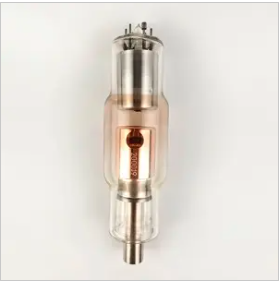In today's modern healthcare, medical X-ray tubes have revolutionized the way doctors diagnose and treat disease. These X-ray tubes play a key role in a variety of medical imaging modalities, allowing healthcare professionals to gain valuable insights into the inner workings of the human body. The impact of these tubes on the healthcare industry cannot be underestimated as they significantly improve patient care and treatment outcomes.
One of the main uses of medical X-ray tubes is in radiography, where they capture images of the internal structures of the body. This imaging technique is invaluable for detecting fractures, tumors, and other abnormalities that may not be detected by external examination alone. By providing detailed and accurate imaging, X-ray tubes speed up the diagnostic process, allowing healthcare professionals to quickly make informed decisions about patient treatment plans.
Additionally, medical X-ray tubes are critical in other medical imaging modalities such as computed tomography (CT) scans and fluoroscopy. CT scans produce cross-sectional images of the body, allowing doctors to obtain three-dimensional views of organs and tissues. Fluoroscopy, on the other hand, provides real-time X-ray images, which are especially useful during surgery or to monitor the function of certain body systems. Both technologies rely on the advanced capabilities of X-ray tubes to generate high-quality images, ensuring accurate diagnoses and improving patient outcomes.
The invention of the X-ray tube also paved the way for minimally invasive procedures such as interventional radiology. Using X-ray guidance, doctors can perform a variety of complex procedures without extensive surgery. For example, angiography involves inserting a catheter into a blood vessel to assess its condition. The X-ray tube visualizes the movement of the catheter, ensuring its precise placement and minimizing risk to the patient. These procedures are enabled by medical X-ray tubes that reduce patient discomfort, shorten recovery time and improve overall healthcare efficiency.
Additionally, X-ray technology has evolved over the years, leading to the development of digital radiography. This digital imaging method does not require traditional X-ray film and enables instant image acquisition and manipulation. By using electronic detectors, medical professionals can improve image quality, zoom in on specific areas of interest, and easily share images with other healthcare providers for consultation. This digital transformation increases workflow efficiency, reduces costs, and contributes to better patient care.
Despite the many benefits of medical X-ray tubes, there are still concerns about radiation exposure. However, advances in technology have minimized this risk. Modern X-ray tubes are designed to provide the lowest effective radiation dose while still producing high-quality images. Additionally, strict regulations and guidelines govern the safe use of X-ray machines and limit unnecessary exposure. The healthcare industry continues to emphasize the importance of balancing the diagnostic benefits of X-ray imaging with patient safety.
In conclusion, medical X-ray tubes have had a huge impact on the healthcare industry. Their application in various medical imaging techniques has transformed the field of diagnostics, enabling accurate diagnoses and facilitating minimally invasive procedures. The advent of digital radiography has further improved patient care and workflow efficiencies. While concerns about radiation exposure remain, technological advances and strict safety regulations have ensured that the benefits of medical X-ray tubes far outweigh the risks. As the healthcare industry continues to evolve, medical X-ray tubes will undoubtedly remain an important tool in the diagnosis and treatment of a variety of medical conditions, helping healthcare professionals save lives and improve patient outcomes.
Post time: Jul-31-2023



